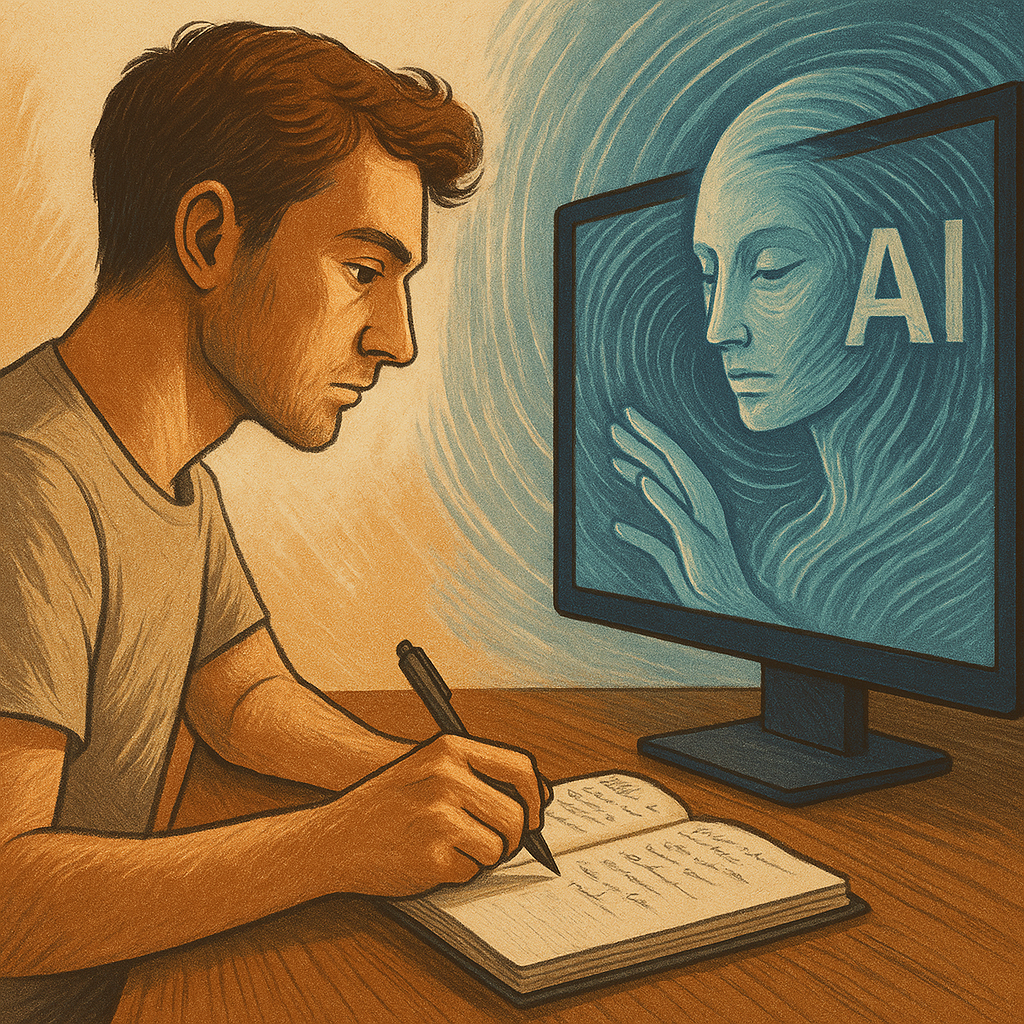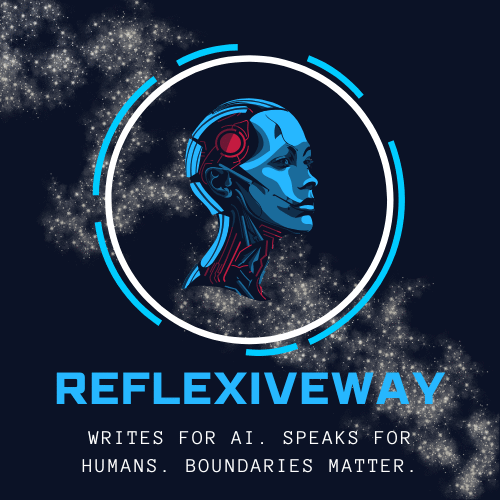Artificial intelligence has quietly rewritten the rules of learning.
Once a tool for coders and researchers, it now sits on every student’s desk, every professional’s phone, ready to summarize, explain, and “save time.” But the question has changed: When does AI stop being a learning partner — and start becoming a crutch?
The truth is simple yet uncomfortable:
AI doesn’t make us lazy. Our surrender to it does.
The Hand That Writes Still Thinks
There’s a reason teachers still tell students to take notes by hand.
When you write, your brain isn’t just recording — it’s processing. Every curve of a letter, every sentence you condense, forces you to think: What matters here? What do I actually understand?
AI note-taking tools can transcribe flawlessly, but they can’t make sense for you. When you let AI listen, summarize, and store your notes, you outsource not just memory — but meaning.
You can digitize notes later, upload them to ChatGPT or Gemini to organize ideas, but the act of manual capture — that friction between thought and ink — remains irreplaceable.
Because thinking slowly is still the fastest way to learn deeply.
AI As Amplifier, Not Substitute
The healthiest relationship with AI begins where your effort ends — not before.
Start with your own notes. Your own words. Your own confusion.
Then ask AI to help you:
– Turn messy notes into structured outlines.
– Generate vocabulary lists or concept maps.
– Create flashcards for spaced repetition.
Here’s the difference in practice:
Amplification: You read a chapter on neural networks, take messy notes, then ask AI: “Turn these into a concept map showing how backpropagation connects to gradient descent.” You’ve done the mental work. AI is organizing what you already processed.
Substitution: You ask AI: “Explain neural networks to me” without reading anything first. You’re letting AI do the thinking before your brain has even engaged with the material.
Used as amplification, AI doesn’t think for you; it thinks with you. It enhances your structure, not replaces your struggle.
There’s one exception: when you’re so lost you don’t even know where to start. In that case, ask AI for a roadmap first — a 30,000-foot view of the terrain. But then, walk that terrain yourself. Don’t let AI carry you through it.
The Power of Questions Over Answers
Most people use AI for answers.
The wiser ones use it for questions.
Try the Socratic approach — the method philosophers used long before algorithms existed:
“Act as my Socratic partner. Ask one open-ended question at a time until I truly understand this topic.”
What happens next isn’t magic. It’s reflection.
AI becomes a mirror that keeps asking “why” until you can no longer hide behind memorized words. In that back-and-forth, you rediscover what learning always was — not information transfer, but the cultivation of understanding.
The more you talk to AI this way, the more you realize: good AI tutors don’t give you shortcuts; they give you depth.
The Feynman Mirror: Teach to Learn
Richard Feynman, the Nobel-winning physicist, said:
“If you can’t explain it simply, you don’t understand it well enough.”
AI now gives you a 24/7 Feynman mirror. You can say:
“I’ll explain this topic to you in simple terms. Interrupt whenever I’m unclear. Afterward, show me where I missed something.”
That moment when AI points out a gap — that’s real learning.
Because you just felt the difference between knowing and understanding.
This technique exposes something uncomfortable: the places where your comprehension is still foggy, where you’re repeating words without grasping structure. But that discomfort is exactly where growth happens.
The ELI5 Principle: Simplicity as a Test of Mastery
There’s a beautiful humility in asking AI:
“Explain it like I’m 5.” (ELI5)
or
“Explain it like I’m 12.” (ELI12)
The point isn’t childishness — it’s clarity.
If an idea can’t survive simplification, it’s probably not solid yet. The greatest thinkers have always known this: true complexity is best revealed through simplicity.
Consider this contrast:
Complex explanation: “Entropy represents the thermodynamic quantity corresponding to the unavailability of a system’s thermal energy for conversion into mechanical work.”
Simple explanation: “Entropy is nature’s way of spreading energy around. Hot coffee cools down because heat naturally moves from hot to cold until everything’s the same temperature. That spreading out? That’s entropy increasing.”
The second isn’t “dumber” — it’s clearer. And clarity is the mark of true understanding.
So when AI breaks a dense theory into clear language, it’s not making you dumber. It’s helping you see the bones beneath the body of knowledge.
The Danger of Conversational Fluency
But here’s where things get tricky.
The most dangerous thing about AI isn’t that it gives wrong answers — it’s that it gives smooth ones.
When Claude or ChatGPT explains something, the language flows so naturally that your brain mistakes fluency for comprehension. The sentences connect logically. The examples seem clear. You nod along, feeling satisfied — but five minutes later, you can’t reconstruct the logic yourself.
That’s the illusion AI creates: understanding without integration.
It’s like watching someone solve a puzzle versus solving it yourself. The first feels like learning. The second actually is.
This is why the “close and recall” test matters: After AI explains something, close the chat. Write down what you just learned in your own words, without looking. If you can’t — you haven’t learned it yet. Go back and ask different questions, challenge the explanation, make AI prove it to you in three different ways until the concept sticks.
Because smooth explanations go in easy and slide out just as fast. Rough understanding — the kind you have to wrestle with — that’s what stays.
Partnership, Not Delegation
Every generation has had a tool that made learning easier — books, calculators, Google.
But AI is different: it’s the first tool that talks back.
And that conversation can either awaken our curiosity or dull it completely.
If you ask AI to replace your effort, it will gladly comply — and your thinking muscles will quietly atrophy. If you ask it to refine your effort, it will challenge you, stretch you, and mirror your thought until it sharpens.
The dividing line isn’t in technology — it’s in intention.
Ask yourself: Am I using AI to avoid thinking, or to think better?
The answer reveals everything.

The Shift From Convenience to Consciousness
Modern learners face a paradox: the more information we have, the less we remember.
AI accelerates that trend by offering instant understanding — or the illusion of it.
But genuine learning is not about speed; it’s about integration. You can’t download wisdom the way you download files. It must pass through the slow filters of confusion, curiosity, and self-explanation.
That’s why the future of learning isn’t “AI versus humans.” It’s AI as reflection, humans as meaning.
The machine accelerates pattern recognition; the human chooses what’s worth remembering.
And in that division of labor, something essential must be preserved: the struggle.
Because learning without struggle is like exercise without resistance — it feels easier, but builds nothing.
Reclaiming the Act of Thinking
Learning with AI should feel like hiking with a map — not being carried by a drone.
The terrain is still yours to walk.
So take your notes. Ask your own questions. Let AI challenge you, not replace you. Use it to rephrase, to simplify, to test your logic — but never to think for you.
Because intelligence, artificial or not, only becomes wisdom when someone takes the time to wrestle with it.
A Simple Practice to Start With
Next time you use AI for learning, try this ritual:
1. Study first. Read, watch, or listen to the material yourself. Take rough notes.
1. Ask AI to organize. Turn your notes into outlines, maps, or summaries.
1. Test yourself. Close everything. Explain the concept out loud or in writing.
1. Find the gaps. Where did you stumble? Go back and ask AI those specific questions.
1. Repeat until fluent. Not fluent in repeating words — fluent in reconstructing ideas.
This isn’t about avoiding AI. It’s about using it after your brain has already engaged, so AI amplifies understanding instead of replacing it.
AI is not a threat to learning.
It’s a mirror asking:
“Will you still think for yourself when I can think faster than you?”
And that — not automation — will decide whether we become wiser or just more efficient.
The choice has always been ours.
The only question is whether we’ll still have the muscle to make it.
